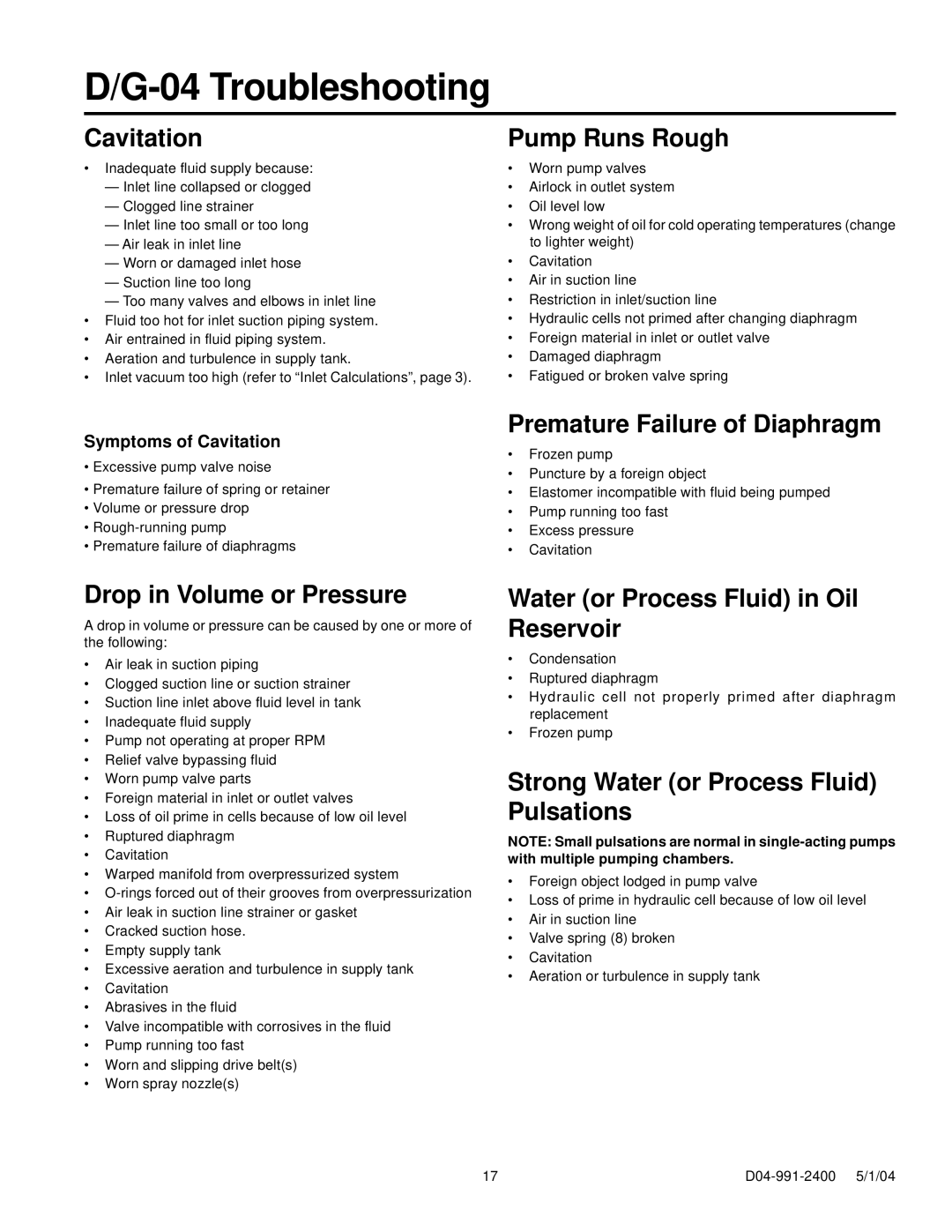D/G-04 Troubleshooting
Cavitation
•Inadequate fluid supply because:
—Inlet line collapsed or clogged
—Clogged line strainer
—Inlet line too small or too long
—Air leak in inlet line
—Worn or damaged inlet hose
—Suction line too long
—Too many valves and elbows in inlet line
•Fluid too hot for inlet suction piping system.
•Air entrained in fluid piping system.
•Aeration and turbulence in supply tank.
•Inlet vacuum too high (refer to “Inlet Calculations”, page 3).
Pump Runs Rough
•Worn pump valves
•Airlock in outlet system
•Oil level low
•Wrong weight of oil for cold operating temperatures (change to lighter weight)
•Cavitation
•Air in suction line
•Restriction in inlet/suction line
•Hydraulic cells not primed after changing diaphragm
•Foreign material in inlet or outlet valve
•Damaged diaphragm
•Fatigued or broken valve spring
Symptoms of Cavitation
•Excessive pump valve noise
•Premature failure of spring or retainer
•Volume or pressure drop
•
•Premature failure of diaphragms
Drop in Volume or Pressure
A drop in volume or pressure can be caused by one or more of the following:
•Air leak in suction piping
•Clogged suction line or suction strainer
•Suction line inlet above fluid level in tank
•Inadequate fluid supply
•Pump not operating at proper RPM
•Relief valve bypassing fluid
•Worn pump valve parts
•Foreign material in inlet or outlet valves
•Loss of oil prime in cells because of low oil level
•Ruptured diaphragm
•Cavitation
•Warped manifold from overpressurized system
•
•Air leak in suction line strainer or gasket
•Cracked suction hose.
•Empty supply tank
•Excessive aeration and turbulence in supply tank
•Cavitation
•Abrasives in the fluid
•Valve incompatible with corrosives in the fluid
•Pump running too fast
•Worn and slipping drive belt(s)
•Worn spray nozzle(s)
Premature Failure of Diaphragm
•Frozen pump
•Puncture by a foreign object
•Elastomer incompatible with fluid being pumped
•Pump running too fast
•Excess pressure
•Cavitation
Water (or Process Fluid) in Oil Reservoir
•Condensation
•Ruptured diaphragm
•Hydraulic cell not properly primed after diaphragm replacement
•Frozen pump
Strong Water (or Process Fluid) Pulsations
NOTE: Small pulsations are normal in
•Foreign object lodged in pump valve
•Loss of prime in hydraulic cell because of low oil level
•Air in suction line
•Valve spring (8) broken
•Cavitation
•Aeration or turbulence in supply tank
17 |
